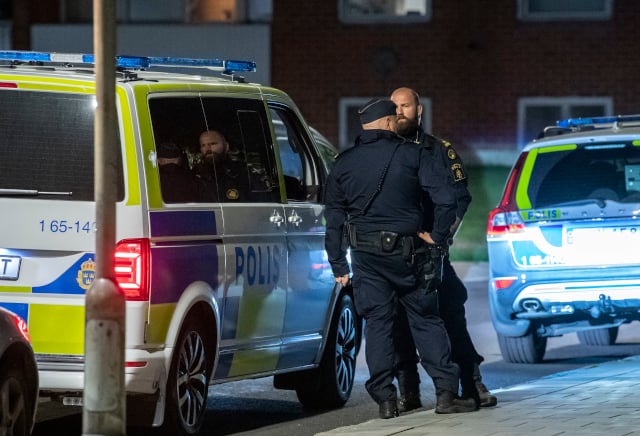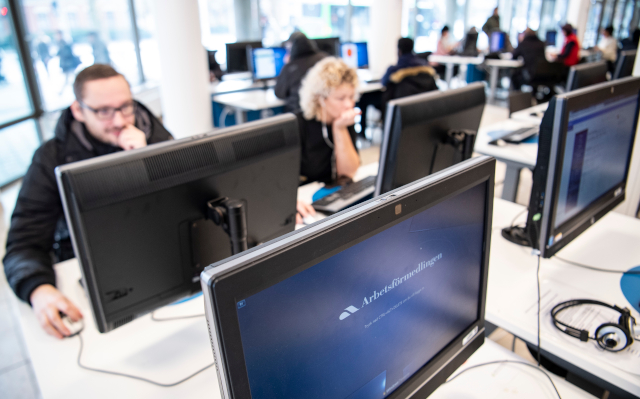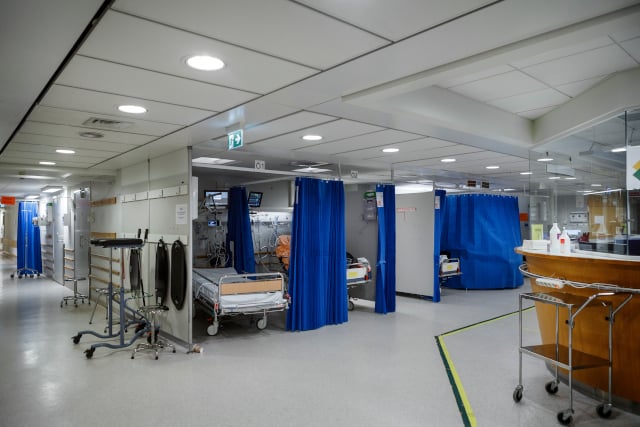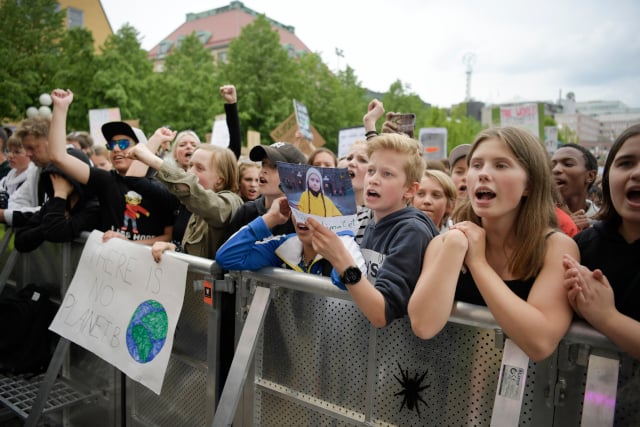What Sweden's new budget means for international residents

This is the first main budget negotiated by the ruling Social Democrat-Greens together with the opposition Centre and Liberals. Let's take a look at what it means for you.
This article was written for Members of The Local and published in September 2019. Read more Membership exclusives here.
Tax cuts for high earners, pensioners and rural residents
The most significant reform is the much-debated decision to abolish Sweden's austerity tax (värnskatt), which is paid by high earners to the central government. It is expected to cost the government around six billion kronor a year ($620 million) but if you earn more than 703,000 kronor a year you can expect a sizeable tax break (exact amount varies by income).
Old-age pensioners on a monthly pension of at least 17,000 kronor are also in line for a tax cut, and those on a low income will see their minimum guaranteed pension raised by 200 kronor a month.
READ ALSO: How Sweden's four-party cross-bloc deal broke the government deadlock
Residents working in around 80 municipalities in remote parts of Sweden are also set to get a tax cut of up to 137 kronor a month starting next year. Around 850,000 people will be affected by this – check the full list of municipalities here to see if you are one of them.
These three reforms will together cost 11.8 billion kronor in 2020.
The budget includes no significant tax hikes for any particular members of society, but some of the sectors that it does propose raising taxes for include a tax on waste incineration, a tax on plastic carrier bags and, from 2022, a tax on the financial sector.
Swedish word of the day: värnskatt https://t.co/PVQOVdUmwj
— The Local Sweden (@TheLocalSweden) September 16, 2019
Law and order
A hotly debated issue in Sweden right now is crime and how to crack down on gang crime.
The budget proposes investing another 0.7 billion kronor in the justice system, for example 280 million kronor to the National Courts Administration, on top of money already earmarked for 2020.
The police will get another 120 million kronor, but their total budget will increase much more than that, write Swedish media. A budget increase of 1.8 billion kronor has already been announced for next year.
READ ALSO: How does Sweden's criminal justice system work?

Police at the scene of a shooting in Malmö in September. Photo: Johan Nilsson/TT
Getting newly arrived immigrants into work
After a long period of a booming economy, Sweden's overall unemployment rate is again slowly rising, and as The Local has reported on several occasions, there is still a huge unemployment gap between native-born and foreign-born job seekers, where the latter are much more likely to be without a job.
The 2020 budget includes job investments to the tune of 3.7 billion kronor. This includes allocating resources to create extra jobs, introductory jobs and employment training. With the aim of getting more new arrivals and long-term unemployed into work, it also proposes introducing a labour market entry deduction and new entry agreements, including for companies without collective bargaining agreements.
"The pace of newly-arrived immigrants' establishment on the labour market must be increased, especially among women, and their knowledge of Swedish must be improved. Investments will be made in Swedish language teaching. Racism and discrimination in the labour market must be countered," states the government in the budget presentation.
OPINION: 'Low-paid jobs for foreigners won't solve the issues on the Swedish labour market'
A major restructuring reform of the Swedish Public Employment Service (Arbetsförmedlingen) is already under way, where a new system will see independent actors matching job seekers with vacancies.

Job seekers at the Swedish Public Employment Service. Photo: Johan Nilsson/TT
Prepare for a slowdown in the economy
As explained above, the Swedish economy is slowing down after several years of high growth. This comes amid increased instability on the global market, with the government highlighting both the trade conflict between the US and China, and Brexit, as risk factors. Finance Minister Magdalena Andersson, however, insisted as you might expect that Sweden was more than ready to handle any market instability.
"The Swedish economy is well equipped to address the uncertainties at home and abroad. Our public finances show a surplus, the central government debt-to-GDP ratio is the lowest since the late 1970s and unemployment has fallen. We have conducted a responsible fiscal policy so that Sweden can meet the slowdown with well-balanced reforms," she said in a written statement presenting the budget.
Meanwhile, as The Local has reported, the Swedish krona is at a record low against the dollar and the euro, and the Riksbank has shown only tentative signs of raising the country's negative interest rate.
Winners or losers? Here's what the low Swedish krona means for you https://t.co/yUgpQcIe6q
— The Local Sweden (@TheLocalSweden) August 6, 2019
Welfare and rural areas
Sweden has long prided itself on being a country with reliable welfare services for everyone, but growing concerns have been raised in recent years of long waiting times for public services. The budget proposal pledges to improve access to health care and reduce waiting lists, and improve the education system.
Some of the measures include boosting education for nurses, investing in mental health care for children and young people, raising the minimum guaranteed pension for retirees on a low income, and employing more teaching assistants, with total welfare investments of 4.62 billion kronor in 2020.
Investments into sparsely populated areas are also part of the budget (beyond the tax cut mentioned above), to bridge the growing rural-urban divide. This includes measures such as broadband expansion (0.15 billion kronor), road and rail maintenance (0.22 billion), subsidies to municipalities with socioeconomic challenges (0.50 billion kronor) and night trains to Europe and northern Sweden.
Municipalities that have taken in a lot of refugees will get a 0.08 billion kronor boost.
READ ALSO: How the Swedish health care system works

Long waiting times at hospitals have been a concern for years. Photo: Simon Rehnström/SvD/TT
Protecting the environment
Sweden's goal is to have net zero greenhouse gas emissions by 2045 at the latest, and with the Green Party in government it comes as no surprise that the budget aims to address climate change "with an ambitious transition in which the entire country can take part".
This includes investment into the Climate Leap and the Green Industry Leap – strategies to encourage more investment into green alternatives – protecting natural environments, measures for clean seas and water, solar cell subsidies and an "electrification commission" to speed up the electrification of heavy road freight and the transport system as a whole. Green reforms are estimated to cost 3.23 billion in 2020.

A climate strike in Stockholm earlier this year. Photo: Janerik Henriksson/TT
Are there any controversies to be aware of?
The governing Social Democrats and Green Party have worked with the Centre and Liberal parties on the budget, as agreed in a cross-bloc deal struck back in January after months of negotiations.
This means that some of the proposals can be traced back to individual parties, and have been reluctantly accepted rather than actively supported by the other parties in exchange for similar acceptance of their own plans (here's the 73-point programme released by the four parties earlier in the year).
The cynically-minded (but of course there are no cynics among you) may be inclined to think it conveniently means parties can take credit for things that work and shift the blame on things that don't. However, it is just as likely that parties will end up taking the hit in the polls for measures they did not support themselves.
The scrapping of the austerity tax, for example, was pushed through mainly by the Liberal Party, while the Centre Party are the ones celebrating the tax cuts for residents of rural and remote areas. On the outside looking in is for example the Left Party, the Social Democrats former budget partner that got squeezed out of negotiations, arguing more money should have been allocated to welfare services rather than tax cuts.
And as Ulf Kristoffersson, the politics reporter for broadcaster TV4 for example pointed out, the centre-left Social Democrat Finance Minister Magdalena Andersson "did not look happy when showing how the budget benefits high earners the most (…) and benefits men more than women".
Och gynnar män mer än kvinnor. pic.twitter.com/QsTe5H8EMx
— Ulf Kristofferson (@U_Kristofferson) September 18, 2019
We've only listed some of the main points of the budget. Read the full proposal here.
Comments
See Also
This article was written for Members of The Local and published in September 2019. Read more Membership exclusives here.
Tax cuts for high earners, pensioners and rural residents
The most significant reform is the much-debated decision to abolish Sweden's austerity tax (värnskatt), which is paid by high earners to the central government. It is expected to cost the government around six billion kronor a year ($620 million) but if you earn more than 703,000 kronor a year you can expect a sizeable tax break (exact amount varies by income).
Old-age pensioners on a monthly pension of at least 17,000 kronor are also in line for a tax cut, and those on a low income will see their minimum guaranteed pension raised by 200 kronor a month.
READ ALSO: How Sweden's four-party cross-bloc deal broke the government deadlock
Residents working in around 80 municipalities in remote parts of Sweden are also set to get a tax cut of up to 137 kronor a month starting next year. Around 850,000 people will be affected by this – check the full list of municipalities here to see if you are one of them.
These three reforms will together cost 11.8 billion kronor in 2020.
The budget includes no significant tax hikes for any particular members of society, but some of the sectors that it does propose raising taxes for include a tax on waste incineration, a tax on plastic carrier bags and, from 2022, a tax on the financial sector.
Swedish word of the day: värnskatt https://t.co/PVQOVdUmwj
— The Local Sweden (@TheLocalSweden) September 16, 2019
Law and order
A hotly debated issue in Sweden right now is crime and how to crack down on gang crime.
The budget proposes investing another 0.7 billion kronor in the justice system, for example 280 million kronor to the National Courts Administration, on top of money already earmarked for 2020.
The police will get another 120 million kronor, but their total budget will increase much more than that, write Swedish media. A budget increase of 1.8 billion kronor has already been announced for next year.
READ ALSO: How does Sweden's criminal justice system work?

Police at the scene of a shooting in Malmö in September. Photo: Johan Nilsson/TT
Getting newly arrived immigrants into work
After a long period of a booming economy, Sweden's overall unemployment rate is again slowly rising, and as The Local has reported on several occasions, there is still a huge unemployment gap between native-born and foreign-born job seekers, where the latter are much more likely to be without a job.
The 2020 budget includes job investments to the tune of 3.7 billion kronor. This includes allocating resources to create extra jobs, introductory jobs and employment training. With the aim of getting more new arrivals and long-term unemployed into work, it also proposes introducing a labour market entry deduction and new entry agreements, including for companies without collective bargaining agreements.
"The pace of newly-arrived immigrants' establishment on the labour market must be increased, especially among women, and their knowledge of Swedish must be improved. Investments will be made in Swedish language teaching. Racism and discrimination in the labour market must be countered," states the government in the budget presentation.
OPINION: 'Low-paid jobs for foreigners won't solve the issues on the Swedish labour market'
A major restructuring reform of the Swedish Public Employment Service (Arbetsförmedlingen) is already under way, where a new system will see independent actors matching job seekers with vacancies.

Job seekers at the Swedish Public Employment Service. Photo: Johan Nilsson/TT
Prepare for a slowdown in the economy
As explained above, the Swedish economy is slowing down after several years of high growth. This comes amid increased instability on the global market, with the government highlighting both the trade conflict between the US and China, and Brexit, as risk factors. Finance Minister Magdalena Andersson, however, insisted as you might expect that Sweden was more than ready to handle any market instability.
"The Swedish economy is well equipped to address the uncertainties at home and abroad. Our public finances show a surplus, the central government debt-to-GDP ratio is the lowest since the late 1970s and unemployment has fallen. We have conducted a responsible fiscal policy so that Sweden can meet the slowdown with well-balanced reforms," she said in a written statement presenting the budget.
Meanwhile, as The Local has reported, the Swedish krona is at a record low against the dollar and the euro, and the Riksbank has shown only tentative signs of raising the country's negative interest rate.
Winners or losers? Here's what the low Swedish krona means for you https://t.co/yUgpQcIe6q
— The Local Sweden (@TheLocalSweden) August 6, 2019
Welfare and rural areas
Sweden has long prided itself on being a country with reliable welfare services for everyone, but growing concerns have been raised in recent years of long waiting times for public services. The budget proposal pledges to improve access to health care and reduce waiting lists, and improve the education system.
Some of the measures include boosting education for nurses, investing in mental health care for children and young people, raising the minimum guaranteed pension for retirees on a low income, and employing more teaching assistants, with total welfare investments of 4.62 billion kronor in 2020.
Investments into sparsely populated areas are also part of the budget (beyond the tax cut mentioned above), to bridge the growing rural-urban divide. This includes measures such as broadband expansion (0.15 billion kronor), road and rail maintenance (0.22 billion), subsidies to municipalities with socioeconomic challenges (0.50 billion kronor) and night trains to Europe and northern Sweden.
Municipalities that have taken in a lot of refugees will get a 0.08 billion kronor boost.
READ ALSO: How the Swedish health care system works

Long waiting times at hospitals have been a concern for years. Photo: Simon Rehnström/SvD/TT
Protecting the environment
Sweden's goal is to have net zero greenhouse gas emissions by 2045 at the latest, and with the Green Party in government it comes as no surprise that the budget aims to address climate change "with an ambitious transition in which the entire country can take part".
This includes investment into the Climate Leap and the Green Industry Leap – strategies to encourage more investment into green alternatives – protecting natural environments, measures for clean seas and water, solar cell subsidies and an "electrification commission" to speed up the electrification of heavy road freight and the transport system as a whole. Green reforms are estimated to cost 3.23 billion in 2020.

A climate strike in Stockholm earlier this year. Photo: Janerik Henriksson/TT
Are there any controversies to be aware of?
The governing Social Democrats and Green Party have worked with the Centre and Liberal parties on the budget, as agreed in a cross-bloc deal struck back in January after months of negotiations.
This means that some of the proposals can be traced back to individual parties, and have been reluctantly accepted rather than actively supported by the other parties in exchange for similar acceptance of their own plans (here's the 73-point programme released by the four parties earlier in the year).
The cynically-minded (but of course there are no cynics among you) may be inclined to think it conveniently means parties can take credit for things that work and shift the blame on things that don't. However, it is just as likely that parties will end up taking the hit in the polls for measures they did not support themselves.
The scrapping of the austerity tax, for example, was pushed through mainly by the Liberal Party, while the Centre Party are the ones celebrating the tax cuts for residents of rural and remote areas. On the outside looking in is for example the Left Party, the Social Democrats former budget partner that got squeezed out of negotiations, arguing more money should have been allocated to welfare services rather than tax cuts.
And as Ulf Kristoffersson, the politics reporter for broadcaster TV4 for example pointed out, the centre-left Social Democrat Finance Minister Magdalena Andersson "did not look happy when showing how the budget benefits high earners the most (…) and benefits men more than women".
Och gynnar män mer än kvinnor. pic.twitter.com/QsTe5H8EMx
— Ulf Kristofferson (@U_Kristofferson) September 18, 2019
We've only listed some of the main points of the budget. Read the full proposal here.
Join the conversation in our comments section below. Share your own views and experience and if you have a question or suggestion for our journalists then email us at [email protected].
Please keep comments civil, constructive and on topic – and make sure to read our terms of use before getting involved.
Please log in here to leave a comment.